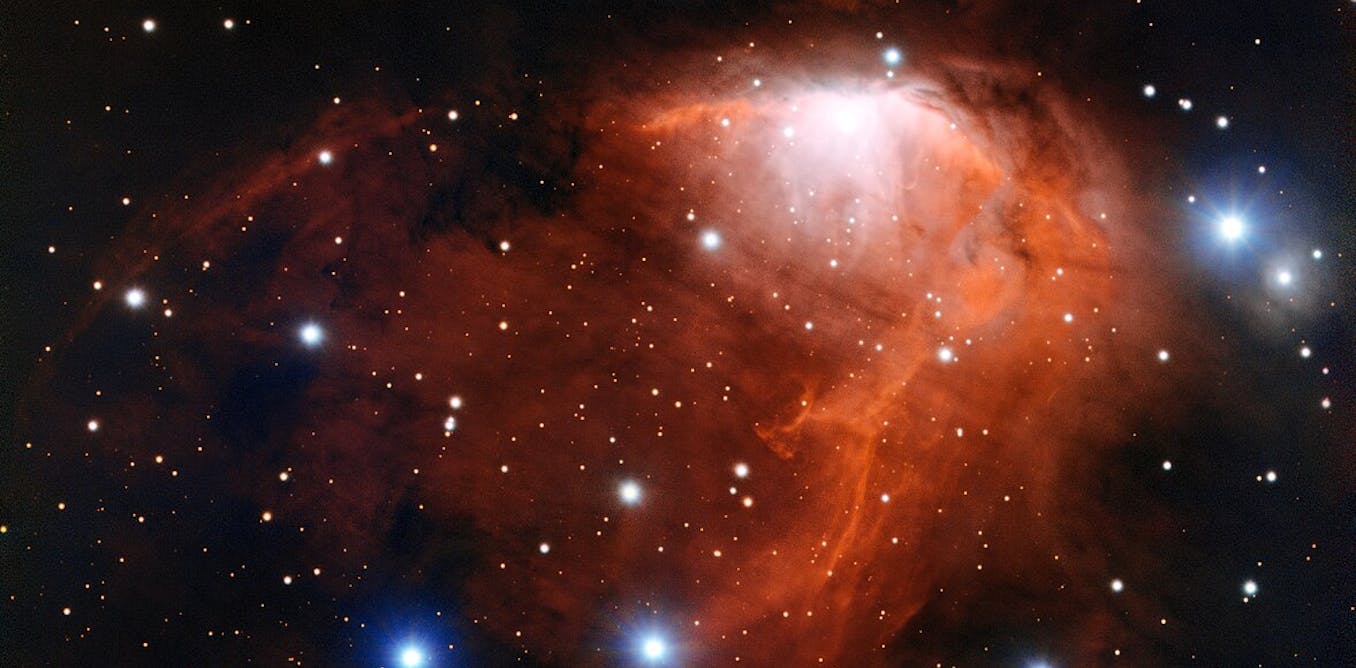Science
New Research Reveals Early Stars May Have Varied Masses

Astronomers have long believed that the first stars in the universe were predominantly massive, but new studies suggest a more diverse population may have existed. Research published in July 2025 indicates that lower-mass stars could have formed alongside their more massive counterparts during the early universe. This challenges long-standing assumptions about stellar formation and the chemical processes that occurred shortly after the Big Bang.
The two studies, conducted by teams from the Max Planck Institute for Nuclear Physics and the Academia Sinica Institute of Astronomy and Astrophysics, delve into the dynamics of gas clouds in the infancy of the universe. The first study utilizes advanced astrophysical computer simulations that model turbulence within gas clouds, leading to the fragmentation of these clouds into smaller star-forming clumps. The second study presents laboratory experiments showing that molecular hydrogen, a crucial component for star formation, may have been produced in larger quantities than previously thought.
Traditionally, astronomers posited that the first stars were composed mainly of hydrogen and helium, with masses ranging from hundreds to thousands of times that of the Sun. These stars, incredibly luminous and short-lived, ended their existence in spectacular supernova explosions. As a result, it was assumed that they did not leave behind remnants that could be observed today. Recent findings, however, suggest that conditions in the early universe may have been more conducive to the formation of a variety of star masses.
Florian Grussie and his colleagues demonstrated through both computer modeling and laboratory experiments that the first molecule to form, helium hydride (HeH+), could have been more prevalent in the early universe than previously recognized. Contrary to high school chemistry teachings, helium can indeed form molecules under specific conditions. In this case, HeH+ interacts with hydrogen deuteride (HD) to create molecular hydrogen (H2), which is effective at cooling gas clouds. This cooling process could have made it easier for lower-mass stars to form by encouraging the collapse of less massive protostellar clouds.
Another study led by Ke-Jung Chen further supports this hypothesis. Utilizing detailed simulations, the team revealed that turbulence within collapsing gas clouds could lead to the formation of lower-mass stars. Their research suggests that stars in the early universe could have varied in mass, potentially forming stars similar in size to the Sun or even up to 40 times more massive.
The implications of these findings are significant. If lower-mass stars did indeed form early in the universe, they may still exist and could provide valuable insights into the formation of galaxies and planetary systems. The galaxy NGC 1140, for instance, contains abundant primordial gas and represents a potential site for observing such stars. This galaxy, with its composition rich in hydrogen and helium but lacking heavier elements, mirrors conditions from the early universe.
Despite the promising results, observational astronomers face challenges in confirming the existence of these lower-mass stars. Their faint luminosity makes them difficult to detect, though several studies have reported potential sightings. Continued research and advancements in observational techniques may ultimately lead to the discovery of these elusive celestial bodies.
The new insights into star formation during the universe’s infancy underscore the dynamic and evolving nature of astrophysical research. As scientists continue to unravel the complexities of early stellar populations, they may redefine our understanding of how the cosmos developed in its formative years. The quest for knowledge about the first stars not only enhances our comprehension of the universe but also highlights the intricate interplay between chemistry and astrophysics.
-

 Lifestyle3 months ago
Lifestyle3 months agoLibraries Challenge Rising E-Book Costs Amid Growing Demand
-

 Sports3 months ago
Sports3 months agoTyreek Hill Responds to Tua Tagovailoa’s Comments on Team Dynamics
-

 Sports3 months ago
Sports3 months agoLiverpool Secures Agreement to Sign Young Striker Will Wright
-

 Lifestyle3 months ago
Lifestyle3 months agoSave Your Split Tomatoes: Expert Tips for Gardeners
-

 Lifestyle3 months ago
Lifestyle3 months agoPrincess Beatrice’s Daughter Athena Joins Siblings at London Parade
-

 World3 months ago
World3 months agoWinter Storms Lash New South Wales with Snow, Flood Risks
-

 Science3 months ago
Science3 months agoTrump Administration Moves to Repeal Key Climate Regulation
-

 Science2 months ago
Science2 months agoSan Francisco Hosts Unique Contest to Identify “Performative Males”
-

 Business3 months ago
Business3 months agoSoFi Technologies Shares Slip 2% Following Insider Stock Sale
-

 Science3 months ago
Science3 months agoNew Tool Reveals Link Between Horse Coat Condition and Parasites
-

 Sports3 months ago
Sports3 months agoElon Musk Sculpture Travels From Utah to Yosemite National Park
-

 Science3 months ago
Science3 months agoNew Study Confirms Humans Transported Stonehenge Bluestones









